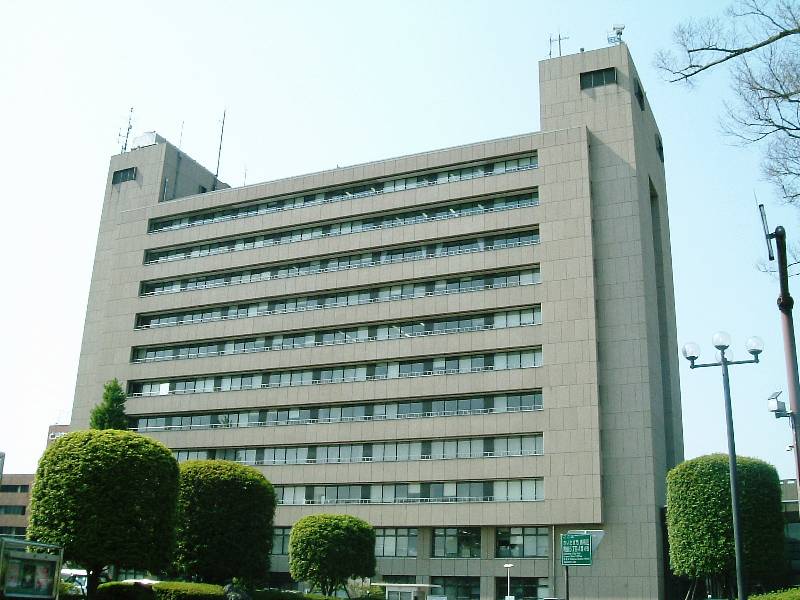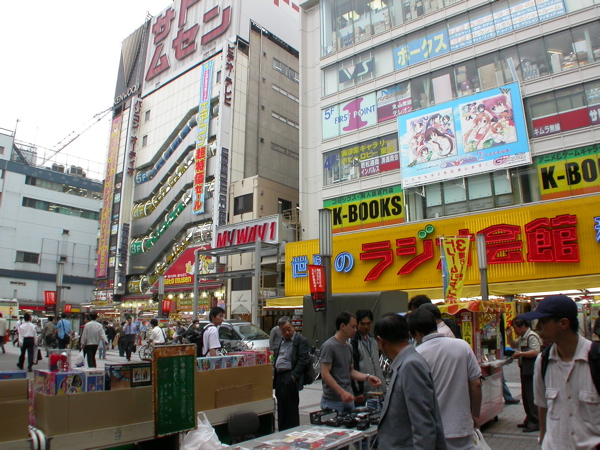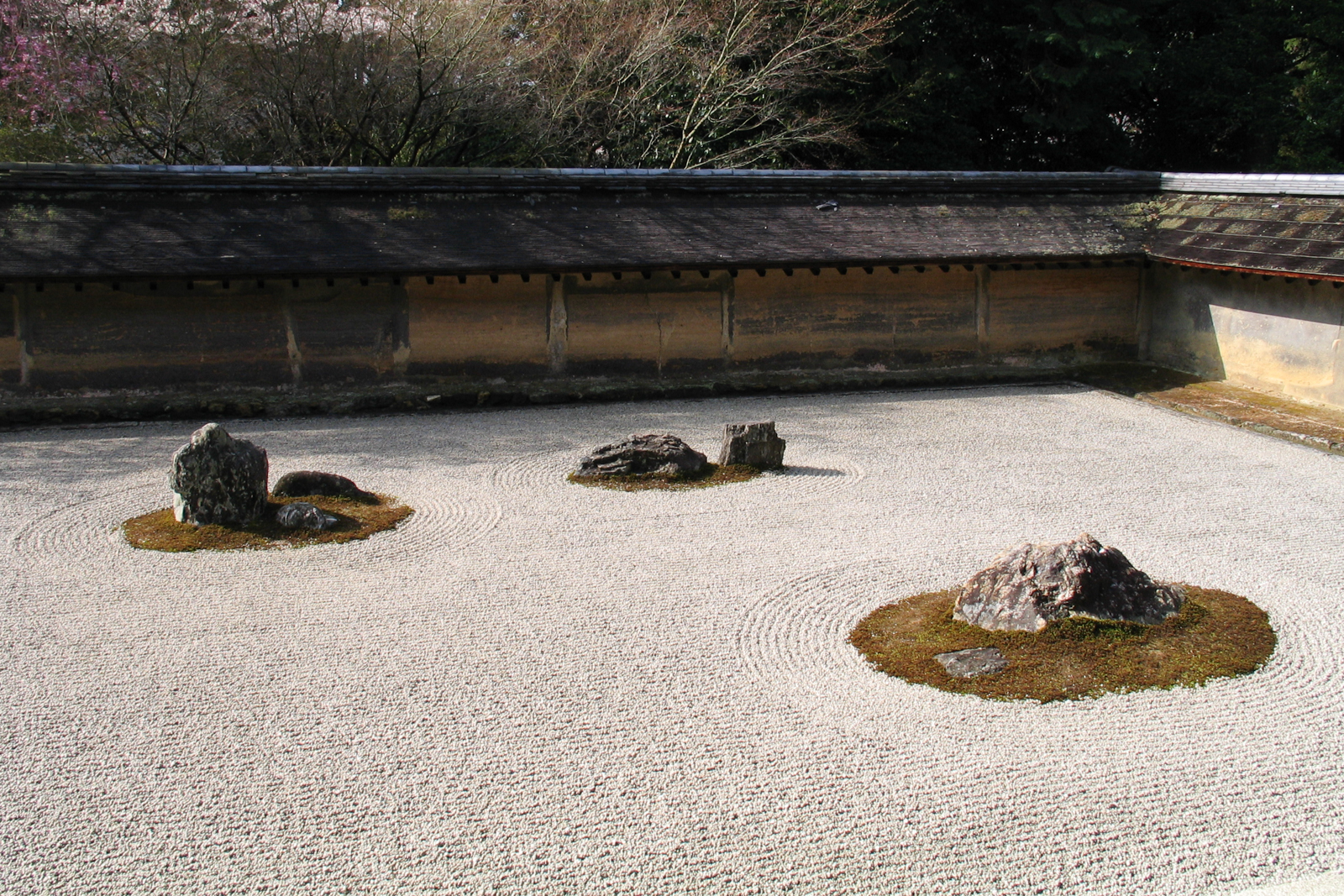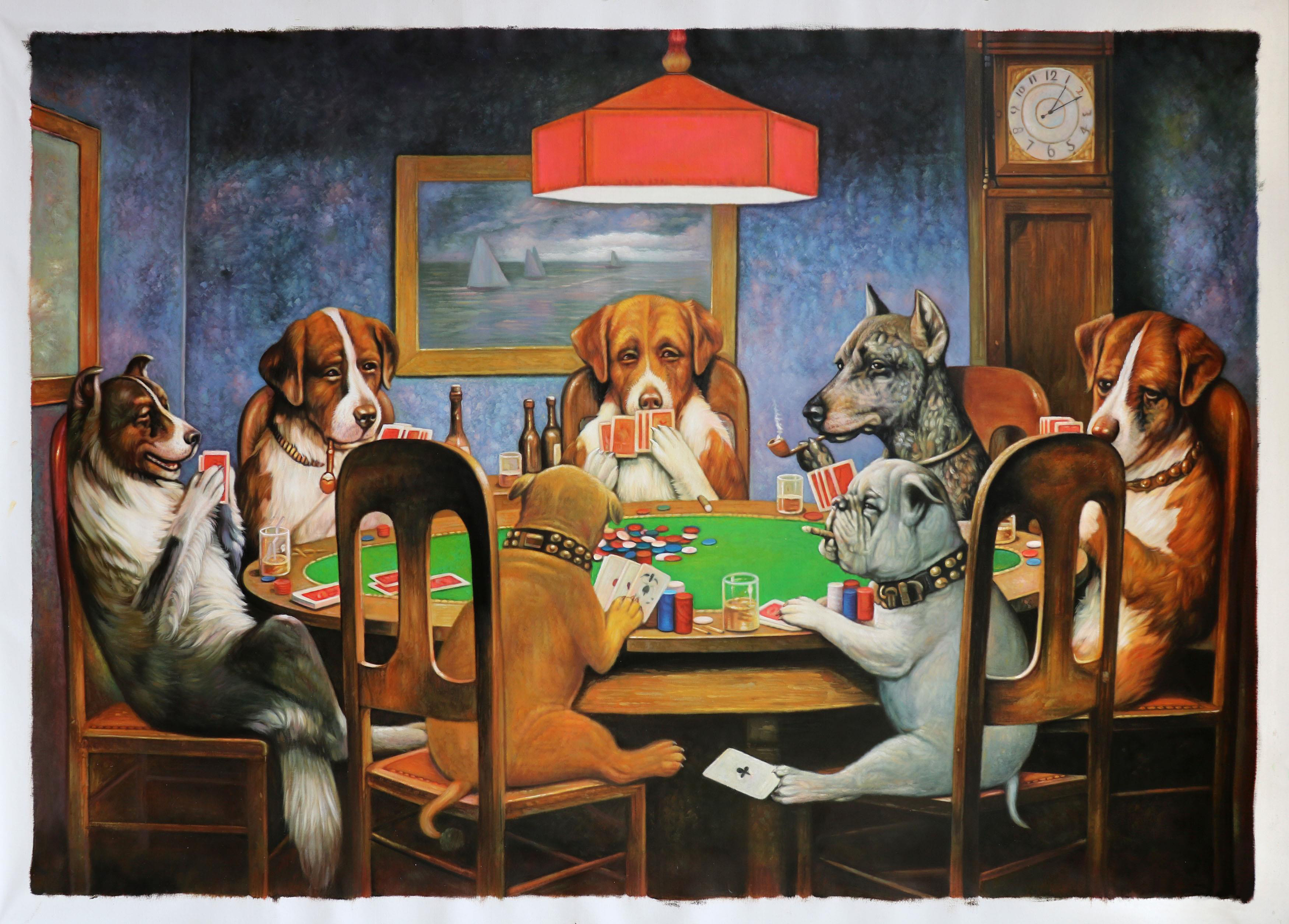|
Tenmyouya Hisashi
Tenmyouya Hisashi (天明屋尚, born 1966 in Tokyo, Japan) is a Japanese contemporary artist. Tenmyouya's unique style, he calls Neo-Nihonga, revives Japanese traditional painting as a contemporary art. In 2000 he also created the new-style "Butouha" which resists the authoritative art system through his painting. In 2010 he proposed a new Japanese art scheme named "Basara" which is extravagant and extraordinary and embodies a Samurai aesthetic like "Basara" in the Nanboku dynasty era and Kabuki-mono at the end of the Sengoku era. Neo Nihonga (Neo Japanese-style painting) "Neo Japanese-style painting" is an art concept, founded by Tenmyouya Hisashi in 2001. It is the antithesis of a modern Japanese-style painting. He thinks a modern Japanese-style painting whose role as an opposite concept of a modern Western-style painting ended keeps to traditional painting materials such as mineral pigments, glue and ink. On the other hand, Neo Japanese-style painting uses modern media ... [...More Info...] [...Related Items...] OR: [Wikipedia] [Google] [Baidu] |
Saitama Prefecture
is a landlocked prefecture of Japan located in the Kantō region of Honshu. Saitama Prefecture has a population of 7,338,536 (1 January 2020) and has a geographic area of 3,797 km2 (1,466 sq mi). Saitama Prefecture borders Tochigi Prefecture and Gunma Prefecture to the north, Nagano Prefecture to the west, Yamanashi Prefecture to the southwest, Tokyo to the south, Chiba Prefecture to the southeast, and Ibaraki Prefecture to the northeast. Saitama is the capital and largest city of Saitama Prefecture, with other major cities including Kawaguchi, Kawagoe, and Tokorozawa. Saitama Prefecture is part of the Greater Tokyo Area, the most populous metropolitan area in the world, and many of its cities are described as bedroom communities and suburbs of Tokyo with many residents commuting into the city each day. History According to ''Sendai Kuji Hongi'' (''Kujiki''), Chichibu was one of 137 provinces during the reign of Emperor Sujin. Chichibu Province was in western Saitama. ... [...More Info...] [...Related Items...] OR: [Wikipedia] [Google] [Baidu] |
Warring States Period
The Warring States period () was an era in History of China#Ancient China, ancient Chinese history characterized by warfare, as well as bureaucratic and military reforms and consolidation. It followed the Spring and Autumn period and concluded with the Qin's wars of unification, Qin wars of conquest that saw the annexation of all other contender states, which ultimately led to the Qin (state), Qin state's victory in 221 BC as the first unified History of China#Imperial China, Chinese empire, known as the Qin dynasty. Although different scholars point toward different dates ranging from 481 BC to 403 BC as the true beginning of the Warring States, Sima Qian's choice of 475 BC is the most often cited. The Warring States era also overlaps with the second half of the Eastern Zhou Period, Eastern Zhou dynasty, though the Chinese sovereign, known as the king of Zhou, ruled merely as a figurehead and served as a backdrop against the machinations of the warring states. The "Warring St ... [...More Info...] [...Related Items...] OR: [Wikipedia] [Google] [Baidu] |
Living People
Related categories * :Year of birth missing (living people) / :Year of birth unknown * :Date of birth missing (living people) / :Date of birth unknown * :Place of birth missing (living people) / :Place of birth unknown * :Year of death missing / :Year of death unknown * :Date of death missing / :Date of death unknown * :Place of death missing / :Place of death unknown * :Missing middle or first names See also * :Dead people * :Template:L, which generates this category or death years, and birth year and sort keys. : {{DEFAULTSORT:Living people 21st-century people People by status ... [...More Info...] [...Related Items...] OR: [Wikipedia] [Google] [Baidu] |
Japanese Contemporary Artists
Japanese may refer to: * Something from or related to Japan, an island country in East Asia * Japanese language, spoken mainly in Japan * Japanese people, the ethnic group that identifies with Japan through ancestry or culture ** Japanese diaspora, Japanese emigrants and their descendants around the world * Japanese citizens, nationals of Japan under Japanese nationality law ** Foreign-born Japanese, naturalized citizens of Japan * Japanese writing system, consisting of kanji and kana * Japanese cuisine, the food and food culture of Japan See also * List of Japanese people * * Japonica (other) * Japonicum * Japonicus * Japanese studies Japanese studies (Japanese: ) or Japan studies (sometimes Japanology in Europe), is a sub-field of area studies or East Asian studies involved in social sciences and humanities research on Japan. It incorporates fields such as the study of Japanese ... {{disambiguation Language and nationality disambiguation pages ... [...More Info...] [...Related Items...] OR: [Wikipedia] [Google] [Baidu] |
1966 Births
Events January * January 1 – In a coup, Colonel Jean-Bédel Bokassa takes over as military ruler of the Central African Republic, ousting President David Dacko. * January 3 – 1966 Upper Voltan coup d'état: President Maurice Yaméogo is deposed by a military coup in the Republic of Upper Volta (modern-day Burkina Faso). * January 10 ** Pakistani–Indian peace negotiations end successfully with the signing of the Tashkent Declaration, a day before the sudden death of Indian prime minister Lal Bahadur Shastri. ** The House of Representatives of the US state of Georgia refuses to allow African-American representative Julian Bond to take his seat, because of his anti-war stance. ** A Commonwealth Prime Ministers' Conference convenes in Lagos, Nigeria, primarily to discuss Rhodesia. * January 12 – United States President Lyndon Johnson states that the United States should stay in South Vietnam until Communist aggression there is ended. * January 15 – 1966 Nigeria ... [...More Info...] [...Related Items...] OR: [Wikipedia] [Google] [Baidu] |
Saitama, Japan
is the capital and the most populous city of Saitama Prefecture, Japan. Its area incorporates the former cities of Urawa, Ōmiya, Yono and Iwatsuki. It is a city designated by government ordinance. Being in the Greater Tokyo Area and lying 15 to 30 kilometres north of central Tokyo, many of its residents commute into Tokyo. , the city had an estimated population of 1,324,854, and a population density of 6,093 people per km² (15,781 people per mi²). Its total area is . Etymology The name "Saitama" originally comes from the of what is now the city of Gyōda in the northern part of what is now known as Saitama Prefecture. "Sakitama" has an ancient history and is mentioned in the famous 8th century poetry anthology ''Man'yōshū''. The pronunciation has changed from Sakitama to Saitama over the years. With the merger of Urawa, Ōmiya, and Yono it was decided that a new name, one fitting for this newly created prefectural capital, was needed. The prefectural name was chang ... [...More Info...] [...Related Items...] OR: [Wikipedia] [Google] [Baidu] |
Tarō Okamoto
was a Japanese artist, art theorist, and writer. He is particularly well known for his avant-garde paintings and public sculptures and murals, and for his theorization of traditional Japanese culture and avant-garde artistic practices. Biography Early life (1911–1929) Taro Okamoto was the son of cartoonist Okamoto Ippei and writer Okamoto Kanoko. He was born in Takatsu, in Kawasaki, Kanagawa Prefecture. In 1927, at the age of sixteen, Okamoto began to take lessons in oil painting from the artist Wada Eisaku. In 1929, Okamoto entered the Tokyo School of Fine Arts (today Tokyo University of the Arts) in the oil painting department. Time in Europe (1929–1940) In 1929, Okamoto and his family accompanied his father on a trip to Europe to cover the London Naval Treaty of 1930. While in Europe, Okamoto spent time in the Netherlands, Belgium, and Paris, where he rented a studio in Montparnasse and enrolled in a lycée in Choisy-le-Roi. After his parents returned to Japan i ... [...More Info...] [...Related Items...] OR: [Wikipedia] [Google] [Baidu] |
Low Culture
In sociology, the term Low culture identifies the forms of popular culture that have mass appeal, which is in contrast to High culture, which has a limited appeal to a smaller proportion of the populace. Culture theory proposes that both high culture and low culture are subcultures within a society, because each type of popular culture is mass produced by the culture industry, for every social class. Standards and definitions In ''Popular Culture and High Culture: An Analysis and Evaluation of Taste'' (1958), Herbert J. Gans defines and identifies ''Low culture'': Culture as social class Each social class possess their own types of high-culture and of low-culture, the definition and content of which are determined by the socio-economic and educational particulars, the '' habitus'' of the people who compose a given social class. Therefore, what is ''high culture'' and what is ''low culture'' has specific meanings and usages collectively determined by the members of a soc ... [...More Info...] [...Related Items...] OR: [Wikipedia] [Google] [Baidu] |
Otaku
is a Japanese word that describes people with consuming interests, particularly in anime, manga, video games, or computers. Its contemporary use originated with a 1983 essay by Akio Nakamori in ''Manga Burikko''. may be used as a pejorative with its negativity stemming from a stereotypical view of as social outcasts and the media's reporting on Tsutomu Miyazaki, "The Otaku Murderer", in 1989. According to studies published in 2013, the term has become less negative, and an increasing number of people now identify themselves as , both in Japan and elsewhere. Out of 137,734 teens surveyed in Japan in 2013, 42.2% self-identified as a type of . subculture is a central theme of various anime and manga works, documentaries and academic research. The subculture began in the 1980s as changing social mentalities and the nurturing of traits by Japanese schools combined with the resignation of such individuals to what was then seen as inevitably becoming social outcasts. The subcu ... [...More Info...] [...Related Items...] OR: [Wikipedia] [Google] [Baidu] |
Wabi Sabi
In traditional Japanese aesthetics, is a world view centered on the acceptance of wikt:transience, transience and imperfection. The aesthetic is sometimes described as one of appreciating beauty that is "imperfect, impermanent, and incomplete" in nature. It is prevalent throughout all forms of Japanese art. is a composite of two interrelated aesthetic concepts, and . According to the Stanford Encyclopedia of Philosophy, may be translated as "subdued, austere beauty," while means "rustic patina." is derived from the Buddhist teaching of the , specifically , and , however, originally the concepts were seen as two distinct concepts. Characteristics of aesthetics and principles include asymmetry, roughness, simplicity, economy, austerity, modesty, intimacy, and the appreciation of both natural objects and the forces of nature. It is often discussed in tandem with a similar aesthetic concept, Mono no aware, . Description According to Leonard Koren, can be described as ... [...More Info...] [...Related Items...] OR: [Wikipedia] [Google] [Baidu] |
Kitsch
Kitsch ( ; loanword from German) is a term applied to art and design that is perceived as naïve imitation, overly-eccentric, gratuitous, or of banal taste. The avant-garde opposed kitsch as melodramatic and superficial affiliation with the human condition and its natural standards of beauty. In the first half of the 20th century, kitsch referred to products of pop culture that lacked the depth of fine art. However, since the emergence of Pop Art in the 1950s, kitsch is sometimes re-appreciated in knowingly ironic, humorous or earnest fashion. To brand visual art as "kitsch" is often still pejorative, though not exclusively. Art deemed kitsch may be enjoyed in an entirely positive and sincere manner. For example, it carries the ability to be quaint or "quirky" without being offensive on the surface, as in the ''Dogs Playing Poker'' paintings. Kitsch can refer to music, literature, or any work, and relates to camp, as they both incorporate irony and extravagance. Hi ... [...More Info...] [...Related Items...] OR: [Wikipedia] [Google] [Baidu] |
Edo Period
The or is the period between 1603 and 1867 in the history of Japan, when Japan was under the rule of the Tokugawa shogunate and the country's 300 regional '' daimyo''. Emerging from the chaos of the Sengoku period, the Edo period was characterized by economic growth, strict social order, isolationist foreign policies, a stable population, perpetual peace, and popular enjoyment of arts and culture. The period derives its name from Edo (now Tokyo), where on March 24, 1603, the shogunate was officially established by Tokugawa Ieyasu. The period came to an end with the Meiji Restoration and the Boshin War, which restored imperial rule to Japan. Consolidation of the shogunate The Edo period or Tokugawa period is the period between 1603 and 1867 in the history of Japan, when Japan was under the rule of the Tokugawa shogunate and the country's regional '' daimyo''. A revolution took place from the time of the Kamakura shogunate, which existed with the Tennō's court, to the Tok ... [...More Info...] [...Related Items...] OR: [Wikipedia] [Google] [Baidu] |






